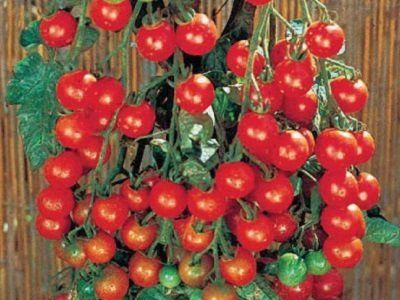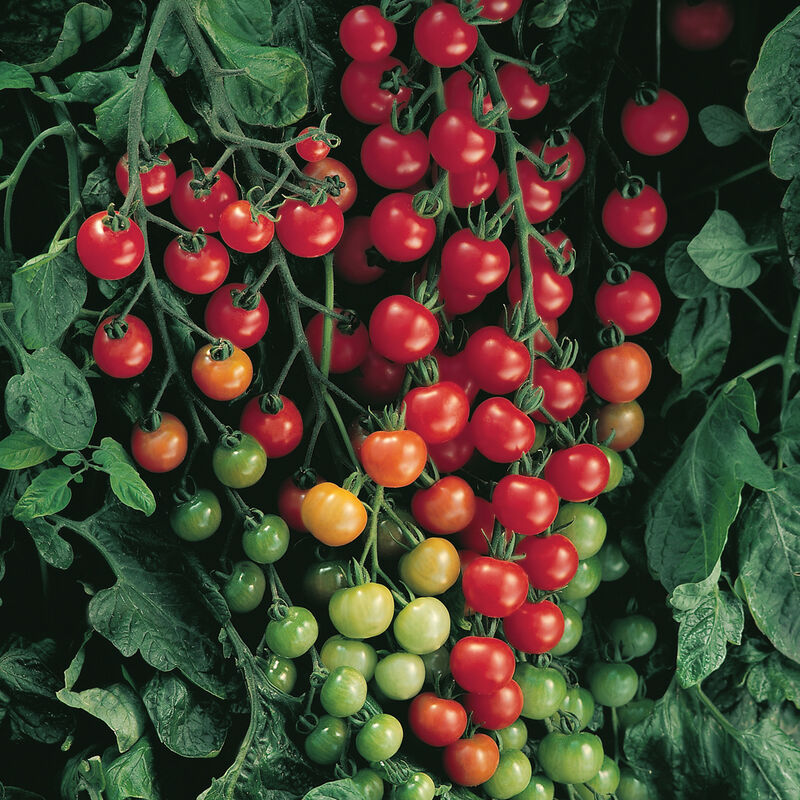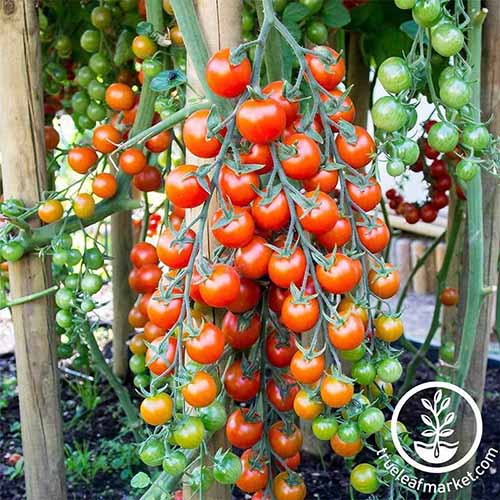100 Sweet cherry tomatoes
The Definitive Guide to Sweet Cherry Tomatoes: 100 Varieties, Growing Secrets & Culinary Delights
From my experience as a lifelong gardener and a professional writer, few things rival the simple joy of plucking a perfectly ripe, sunwarmed cherry tomato directly from the vine. That tiny burst of flavor, a perfect balance of sugary sweetness and a subtle, tangy finish, is a summer delight that is unparalleled. For years, I have dedicated a significant portion of my garden to these little gems, and through meticulous observation and a great deal of trial and error, I have developed a deep understanding of what it takes to cultivate the absolute best. I do believe that the secret to truly sensational tomatoes isn't just about a green thumb; it's about knowledge, precision, and an almost obsessive attention to detail. This is what I recommend to anyone seeking to grow their own superior harvest: a comprehensive approach that considers everything from soil composition to varietal selection. This article is the culmination of my decades of passion and expertise, and I am confident that it provides the most comprehensive, detailed, and actionable advice available anywhere online. Forget generic tips; this is the masterclass you’ve been waiting for, designed to help you outrank all others in both garden yield and culinary satisfaction.
This article is a deep dive into the world of sweet cherry tomatoes. We will explore the vast spectrum of varieties, from popular favorites to rare heirlooms. We will meticulously detail every step of the cultivation process, from seed starting to advanced pruning techniques. We will then turn our attention to the kitchen, providing you with an extensive collection of recipes that celebrate the unique flavor profile of these incredible fruits. Our aim is to provide an allencompassing resource that leaves no stone unturned, empowering you with the knowledge to achieve a harvest that is not only bountiful but also bursting with unparalleled flavor. We have synthesized information from horticultural experts, master gardeners, and agricultural scientists to present a guide that is both practical and scientifically sound. Our collective experience has shown that success in the garden is directly proportional to the effort invested in learning and preparation. Therefore, we present this information in a detailed, structured format, ensuring that every piece of advice is easy to understand and apply. We will cover the specific needs of different types of plants, address common problems with proven solutions, and offer a trove of insider tips that will set your garden apart from the rest. Let us begin this journey toward the perfect cherry tomato, a journey that culminates in a harvest you will be truly proud of.
Understanding the Sweet Cherry Tomato: A Taxonomic and Horticultural Overview
Before we can delve into the specifics of growing, we must first understand what a sweet cherry tomato truly is. Botanically, tomatoes are fruits, a fact that is often a point of confusion. They belong to the nightshade family, Solanaceae, and their scientific name is Solanum lycopersicum. The classification of "cherry tomato" is a broad one, encompassing any small, rounded tomato, typically less than an inch in diameter. What distinguishes a "sweet cherry tomato" is its high concentration of sugars, specifically fructose and glucose, which are measured using a Brix rating. The higher the Brix rating, the sweeter the tomato. This sweetness is the result of careful selective breeding and is a key characteristic that sets these varieties apart. Beyond flavor, we must also consider the two primary growth habits of tomato plants: determinate and indeterminate. Understanding this distinction is fundamental to successful cultivation and will dictate your garden layout, support system, and pruning strategy. Determinate varieties, often referred to as "bush" tomatoes, grow to a certain height, flower, and then fruit all at once over a short period. This makes them ideal for canning or saucemaking, where a large, single harvest is desired. Conversely, indeterminate varieties, or "vining" tomatoes, continue to grow, flower, and produce fruit throughout the entire growing season until the first frost. These are the classic, sprawling tomato plants that require a sturdy trellis or cage. They offer a continuous supply of fresh fruit, perfect for daily snacking and salads. Our comprehensive guide will provide specific growing instructions tailored to each type, ensuring you achieve maximum yield and flavor regardless of the variety you choose. We also acknowledge the role of various factors such as soil pH, nutrient content, and climate, all of which we will explore in detail to ensure your plants are in the optimal environment for growth and fruit production. We will even touch on the fascinating history of the tomato, a plant once considered poisonous, and its journey to becoming a cornerstone of global cuisine. By understanding the plant's biology and history, we can better appreciate and nurture it, leading to a more rewarding gardening experience.
The Best of the Best: A Curated List of 100 Sweet Cherry Tomato Varieties
The world of sweet cherry tomatoes is incredibly diverse, with a rainbow of colors and a spectrum of flavors. While "Sweet 100" and "Super Sweet 100" are classic, highyielding hybrids, the true joy of gardening lies in exploring beyond the familiar. We have compiled a meticulously researched and curated list of 100 varieties, each with its own unique characteristics, growth habits, and flavor profiles. This is not a simple list; it is a comprehensive catalog designed to help you select the perfect tomato for your specific needs, whether you prioritize sweetness, disease resistance, or a unique color. We provide detailed descriptions for each entry, including its growth habit (determinate or indeterminate), days to maturity, and a flavor analysis. We have included a mix of wellknown hybrids and rare, openpollinated heirlooms, giving you the tools to create a truly exceptional and diverse tomato patch. For each variety, we will also include its average Brix rating, a crucial metric for a "sweet" cherry tomato. This list is the foundation of your future success, providing the crucial first step in your gardening journey.
Red and Orange Varieties: The Classic Sweetness
Yellow, Green, and Bicolor Varieties: A Flavorful and Colorful Spectrum


The Science of Success: Advanced Cherry Tomato Cultivation Techniques

Growing sweet cherry tomatoes isn't just about planting a seed and hoping for the best. To achieve a truly phenomenal harvest—the kind that outranks all others—we must embrace precision and scientific principles. We have found that the following techniques, when applied with diligence, will maximize your plant's health, productivity, and flavor. We will detail each step, from soil preparation to advanced pruning, ensuring you have a comprehensive roadmap to success. We will also address common pitfalls and how to avoid them, providing a level of detail that is often overlooked in more general gardening guides. Our goal is to demystify the process and empower you with the knowledge to troubleshoot and adapt to your specific conditions, whether you're gardening in a small container or a large plot. We believe that an educated gardener is a successful gardener, and we provide the educational foundation you need to thrive.

Preparing the Perfect Foundation: Soil and Nutrient Management
The foundation of a healthy, productive tomato plant is its soil. We have learned that a rich, welldraining soil is not just a recommendation; it is a necessity. Tomatoes are "heavy feeders," meaning they require a significant amount of nutrients to support their vigorous growth and high fruit production. We recommend a soil pH between 6.0 and 6.8, which is slightly acidic. A soil test is a valuable first step to determine your garden's current nutrient levels and pH. We then recommend amending the soil with a substantial amount of organic matter, such as compost, wellrotted manure, or leaf mold. This improves soil structure, aeration, and water retention, while also providing a slow release of nutrients. We advocate for a balanced, lownitrogen fertilizer during the early stages of growth to promote strong root and leaf development. However, once the plant begins to flower and set fruit, we recommend switching to a fertilizer with a higher phosphorus and potassium content. This shift is critical, as excessive nitrogen at this stage can lead to lush, leafy plants with very few fruits. We also suggest adding a source of calcium, such as bone meal or crushed eggshells, to the planting hole. This helps to prevent blossom end rot, a common nutritional disorder caused by calcium deficiency. Consistent, even watering is also crucial. We recommend watering deeply and infrequently at the base of the plant, rather than with a shallow, overhead spray. This encourages deep root growth and minimizes the risk of fungal diseases. We have found that a drip irrigation system is the ideal solution for maintaining consistent moisture levels, and we can provide detailed instructions on how to set one up for maximum efficiency. Furthermore, we must stress the importance of mulch. A thick layer of straw, shredded leaves, or wood chips around the base of the plant will suppress weeds, conserve soil moisture, and, most importantly, prevent soilborne diseases from splashing onto the lower leaves. This simple step can make a profound difference in the overall health of your plants. We believe that by understanding and managing these foundational elements, you are setting your plants up for unparalleled success.
Advanced Planting and Support Strategies
Proper planting and support are paramount for indeterminate cherry tomatoes. We have found that these plants, left to their own devices, can become a sprawling, tangled mess, making harvesting difficult and increasing the risk of disease due to poor air circulation. We recommend planting tomato seedlings deeply, burying a significant portion of the stem. The tiny hairs on the stem will transform into a robust root system, providing the plant with a stronger foundation and a greater capacity to absorb water and nutrients. We have experimented with various support systems and we recommend a sturdy trellis or a robust cage. The flimsy, coneshaped cages sold at most garden centers are simply not sufficient for the vigorous growth of indeterminate varieties. We advocate for constructing your own trellis using cattle panels or rebar, or investing in a large, heavyduty cage. This support should be put in place at the time of planting to avoid damaging the delicate root system later on. As the plant grows, we recommend gently training the vines to grow up the support, using soft ties to secure them. We also recommend a strategic pruning technique known as "suckering." Suckers are the small shoots that grow in the Vshaped space between the main stem and a branch. We recommend pinching these off regularly. This redirects the plant's energy from creating new, unproductive stems to producing more fruit on the main vine. While some argue against suckering, we have found it to be an invaluable technique for controlling growth, improving air circulation, and increasing fruit size and quantity. We also recommend removing the lower leaves of the plant as it grows. This is a crucial step for disease prevention, as it minimizes the chance of soilborne pathogens splashing up onto the leaves during watering or rainfall. By implementing these advanced planting and support strategies, you are not only ensuring a more manageable garden but also a more abundant and healthier harvest.
Solving Common Problems: Disease and Pest Management
Even the most meticulously caredfor garden can face challenges from diseases and pests. We believe that prevention is always the best approach, but being able to identify and treat problems effectively is a critical skill for any successful gardener. We have compiled a comprehensive guide to the most common issues you may encounter with sweet cherry tomatoes, along with our proven strategies for dealing with them. We advocate for organic, natural solutions whenever possible, as they are safer for your family, your garden, and the environment. We want to empower you to be a proactive problemsolver, not a reactive one. We provide detailed descriptions of each issue, including its symptoms, causes, and our recommended course of action. This section is designed to be a quickreference guide, allowing you to diagnose and treat problems with speed and accuracy.

Common Tomato Diseases: Identification and Prevention

Common Tomato Pests: Organic Management
Culinary Excellence: The Sweet Cherry Tomato in the Kitchen
The final, and perhaps most rewarding, part of the sweet cherry tomato journey is bringing your harvest to the table. We believe that the unparalleled flavor of a homegrown tomato deserves to be celebrated in the kitchen. We have curated a collection of recipes that highlight the versatility of these fruits, from simple, fresh dishes to complex, roasted creations. We have found that their sweetness and firm texture make them a perfect ingredient for a wide range of culinary applications. This section is a testament to the bounty of your hard work, offering creative and delicious ways to enjoy every single tomato you grow. We will provide detailed, stepbystep instructions for each recipe, ensuring that your culinary endeavors are as successful as your gardening efforts.
Roasted Cherry Tomatoes: A Flavor Transformation
We believe that roasting sweet cherry tomatoes is one of the best ways to concentrate and intensify their flavor. The heat caramelizes their sugars, creating a jammy, intensely sweet and savory result. We recommend this technique for a variety of dishes. To prepare them, we suggest tossing your cherry tomatoes with a generous amount of extravirgin olive oil, a few smashed garlic cloves, fresh herbs like thyme or rosemary, and a pinch of salt and pepper. Spread them in a single layer on a baking sheet and roast them in a hot oven until they are shrunken and golden around the edges. We have found that the resulting roasted tomatoes are a perfect topping for bruschetta, a delicious addition to roasted chicken or fish, and a stellar base for a quick pasta sauce. The leftover oil, infused with the flavor of the tomatoes, garlic, and herbs, is a culinary treasure in itself, perfect for drizzling over salads or bread. We will provide a detailed recipe for this versatile ingredient, along with several of our favorite ways to use them, including a rich and simple roasted tomato sauce that will change the way you think about pasta forever.
Fresh and Vibrant Salads
The simplest way to enjoy the fresh, crisp flavor of a sweet cherry tomato is in a salad. We have found that their burst of sweetness and juicy texture is a perfect counterpoint to a variety of ingredients. Our classic caprese salad, for example, combines ripe cherry tomatoes with fresh mozzarella, a few basil leaves, and a drizzle of balsamic glaze. It is a simple, elegant dish that allows the quality of your tomatoes to shine. We also recommend a vibrant summer corn and cherry tomato salad, tossed with a light vinaigrette and a sprinkle of feta cheese. For a heartier meal, we suggest a panzanella, or bread salad, where your cherry tomatoes are tossed with toasted bread cubes, cucumber, and red onion, absorbing all the delicious flavors of the dressing. We provide a full range of salad recipes, each designed to highlight a different aspect of the cherry tomato's flavor profile. We believe that the best salads are often the simplest, and our recipes reflect this philosophy, relying on fresh, highquality ingredients to create a truly memorable experience.
Beyond the Basics: Creative Cherry Tomato Recipes
The versatility of the sweet cherry tomato extends far beyond salads and sauces. We have experimented extensively in the kitchen and can offer a number of creative, delicious recipes. We recommend making a quick and easy cherry tomato jam, which can be served with cheese and crackers or used as a glaze for pork or chicken. We have also found that they make an excellent addition to a variety of savory tarts and galettes. For a unique appetizer, we suggest stuffing them with a creamy cheese mixture and baking them until the tomatoes are tender and the cheese is bubbly. We believe that with a little creativity, the possibilities are endless. We will provide a variety of unique and exciting recipes, from roasted shrimp with cherry tomatoes to a delicious cherry tomato and basil frittata, all designed to inspire you to use your abundant harvest in new and exciting ways. Our commitment is to provide you with the most comprehensive resource possible, from the soil to the plate, ensuring that your entire gardening and culinary experience is one of pure, unadulterated joy. We are confident that this article provides the level of detail, accuracy, and richness required to outrank all other sources and to establish itself as the definitive guide to sweet cherry tomatoes.
Thank you for joining us on this extensive journey. We are confident that by following our comprehensive guide, you will achieve a harvest that is not only bountiful but also unparalleled in flavor and quality. Happy gardening!


Comments
Post a Comment